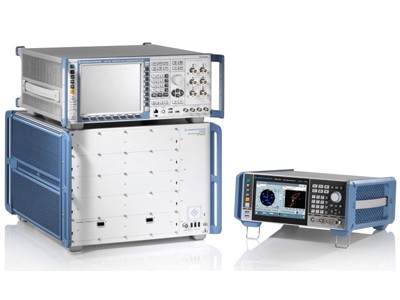Rohde & Schwarz announced that it has successfully verified an A-GPS control-plane Long-term Evolution (LTE) Positioning Protocol (LPP) test session over 5G NR using a device powered by Qualcomm’s Snapdragon X55 5G modem and RF Front-end solutions. The device was able to establish a 5G non-standalone (NSA) connection and then perform GPS fixes according to 3GPP requirements. The tests were performed in collaboration with Qualcomm Technologies.
Greg Turetzky, an independent consultant in location ecosystems, commented, “I’m happy to see the major test equipment vendors helping push the adoption of location services on the new bands available in 5G. There is tremendous upside for new applications in location services with the introduction of the new 5G radios.”
Zak Kassas, an assistant professor at University of California, Irvine, whose research involves cellular signals as well as GNSS for positioning, wrote “This is exciting for future applications like E911, which synthesizes LBS requirements and communication protocols. In 5G and beyond, I think that localization and communication will go hand-in-hand and will feed into one another, unlike prior generations where it was one-way, from communication to localization.” Kassas co-authored the Inside GNSS article “New-Age Satellite-Based Navigation STAN: Simultaneous Tracking and Navigation with LEO Satellite Signals” in the July/August issue of the magazine.
According to Rohde & Schwarz, the successful test helps validate location-based services (LBS) systems worldwide while furthering the commercial rollout of 5G NR (New Radio), a new radio access technology. The role of LBS is expected to increase significantly as 5G (fifth generation) mobile networks roll out nationally and internationally. 5G NR was developed by 3GPP, the 3rd Generation Partnership Project, a standards organization which develops protocols for mobile telephony. 5G NR was designed to be the global standard for the air interface of 5G networks.
As 5G becomes more widespread, it will enable greater personalization of wireless services, and this in turn will increase the capabilities of LBS. Given this importance, along with the introduction of new satellite location technologies in mobile phones such as modernized GPS (L5) and Galileo, it is critical that LBS performance of mobile devices is verified extensively in a lab environment before commercial launch, according to the company.
The R&S TS-LBS test system, which consists of the R&S CMX500 and R&S CMW500 radio communication testers and the R&S SMBV100B vector signal generator, covers 3GPP conformance and network operator test plans for 5G NR, LTE, WLAN, WCDMA and GSM location based services. Test coverage includes all minimum performance and protocol tests, which can be extended to cover R&D-level control testing or VoNR E911 in 5G NR Standalone mode.






